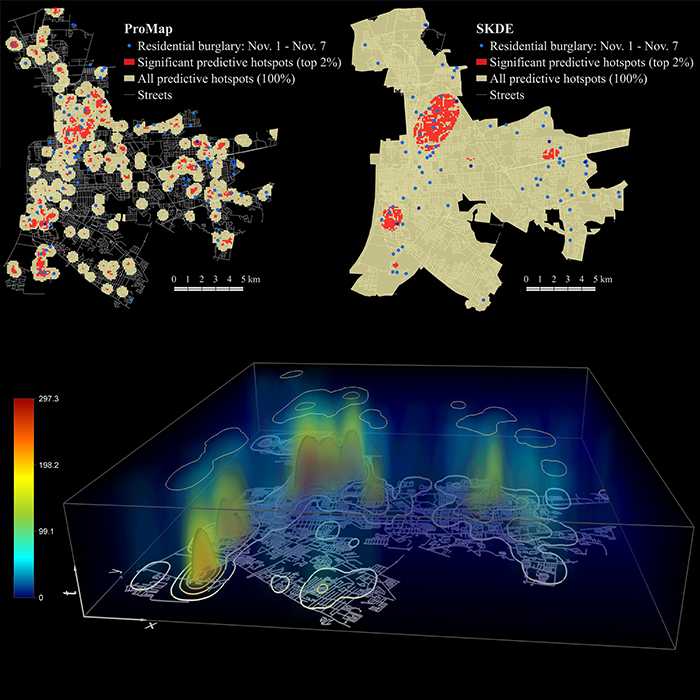
New article first published online: Applied Geography; DOI: 10.1016/j.apgeog.2018.08.001
ABSTRACT: Predictive hotspot mapping plays a critical role in hotspot policing. Existing methods such as the popular kernel density estimation (KDE) do not consider the temporal dimension of crime. Building upon recent works in related fields, this article proposes a spatio-temporal framework for predictive hotspot mapping and evaluation. Comparing to existing work in this scope, the proposed framework has four major features: (1) a spatio-temporal kernel density estimation (STKDE) method is applied to include the temporal component in predictive hotspot mapping, (2) a data-driven optimization technique, the likelihood cross-validation, is used to select the most appropriate bandwidths, (3) a statistical significance test is designed to filter out false positives in the density estimates, and (4) a new metric, the predictive accuracy index (PAI) curve, is proposed to evaluate predictive hotspots at multiple areal scales. The framework is illustrated in a case study of residential burglaries in Baton Rouge, Louisiana in 2011, and the results validate its utility.
Read the full publication at Applied Geography
Read the preprint pdf at ResearchGate